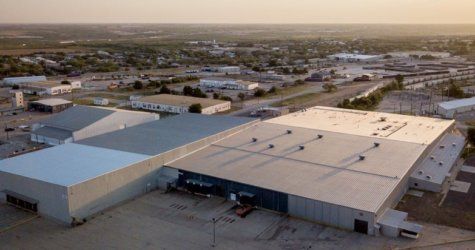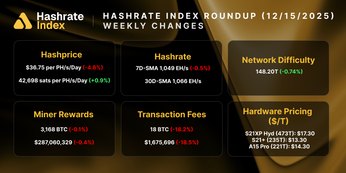
5 Questions to Ask Your Bitcoin Mining Hosting Provider
Here are some key questions to ask a potential bitcoin mining hosting provider.
About the Author: This article is a guest post by by Kristyan Mjolsnes, Vice President of Marketing at Compute North, an industry-leading data infrastructure provider for blockchain, cryptocurrency and high-performance computing applications.
In crypto mining, purchasing the right hardware and knowing what to mine is only a part of the equation. Even the best ASIC miner in a highly efficient facility will experience lost revenue if it is not properly managed.
While many hosting providers offer “all-in” pricing or claim to provide fully managed services for mining hardware on behalf of their customers, it isn’t always clear what that means or how comprehensive the services are, many often failing to deliver in the essential areas. This can make the research process difficult as you search for a provider who will serve as a true support system to optimize the performance your mining operation.
Here are some key questions to ask a potential hosting provider to ensure what is being quoted as all-in or managed services truly are managed.
What do you offer for onsite support?
There is a lot to consider in the realm of onsite support to ensure your equipment is not only properly maintained, but optimized, as well. Is there a support team monitoring miners and addressing alerts for things like miners offline, low hashrate, bad chips or high temperature? If so, what is monitored? Is any of it automated? Are there trained technicians on site? If so, how often?
Managed services should not require a support request on your part in order to receive maintenance. The support team should be way ahead of you in that respect, already working to correct issues before you even know they have arisen.
It is important to get a clear picture of what your provider can offer for proactive support. Their goal and focus should be on the health of the operation to help maximize your hashrate, serving as the onsite eyes and hands of your operation.
Do you leverage firmware for automatic rules-based reboots?
Some miner upkeep doesn’t require any human involvement – or at least, it shouldn’t. Many miners today look for the ability to set rules that will allow certain actions to be automatically taken with their equipment once a certain condition is met.
Some rules-based systems, for example, allow for a notification to be sent once hashrate or temperature reach a certain level, and can even be configured to reboot the miner.
This provides easy and automated troubleshooting for many of the more common miner issues without any manual involvement needed from yourself or an onsite technician.
What visibility do you provide for tickets generated?
Even if you are not directly managing your equipment, having visible access to its status and maintenance progress can provide peace of mind and actionable insight. Miners today often look for a virtual, cloud-based portal that can provide a real-time, 360-degree view of your equipment and its status.
With the right provider, you should be able to view hashrate, chip errors, temperature, and more across every facility, container, rack, and individual miner you own.
Do you offer multiple service level options?
Every user’s goals are different, and the right provider should be able to tailor its offering to meet your unique needs. Many offer basic plans with a bit more self-management and premium plans for those who prefer to be hands-off and allow professional technicians to manage troubleshooting, configuration changes, and more.
Depending on your goals and budget, a certain level of service will undoubtedly be better suited for you than the rest. Reputable providers will share service level commitments, support expectations and remedies for not hitting those commitments. Although not typically shared on the public website, this type of information should be available during the proposal and contract discussions so you can review ahead of time.
Do you manage miner configuration changes?
Accessing miners remotely to handle configuration changes can be a hassle, so ask the question of the provider to understand the level of involvement their support team can have in helping with miner configuration changes. At your direction, a true managed services provider should work with you to navigate everything from pool changes and overclocking setting adjustments to changes in coins mined.
Managing the installation of the latest stock firmware release from a given manufacturer may also be in play, keeping your investment ever-current and energy-efficient.
Review the answers and select the provider that fits your requirements
While this list is not exhaustive, it can help sift through fact versus fiction of many hosting facilities out there today. With the complexities of today’s mining hardware, finding a provider that can support a wide range of needs is incredibly valuable, especially if you do not want to manage your own equipment. Having visible access to miner status and maintenance progress can provide peace-of-mind and actionable insight. The goal and focus should be on the health of the operation to help maximize your hashrate, serving as the onsite eyes and hands of your operation.
Every user’s goals are different, and the right provider should be able to tailor its offering to meet your unique needs. Just like you wouldn’t mine for gold where there isn’t any, you don’t want to place your mining hardware in a facility that wasn’t specifically designed to handle blockchain infrastructure.
Hashrate Index Newsletter
Join the newsletter to receive the latest updates in your inbox.








